Since visiting the new Christian Fields local nature reserve last year, I’d been waiting for an opportunity to return and follow the ancient route which runs from the reserve to the village of Elmhurst.
I was eager to see was whether the dry pool/well we thought we’d found last time had filled with water. Turns out it had, but not necessarily in the way I was expecting… When I went in September it looked like this:
Now (assuming I have got the right place!) it looks like this:
The reason for the change is that site is being developed with £100,000 of funding to attract wildlife (and members of the public!) to the site. As well as the new pond and dipping platform, there will also be picnic areas, wild flower meadows and information boards. There were lots of tadpoles swimming about in the new pool, so it looks as though efforts to improve the site’s biodiversity may be starting to pay off. You can read more information on the project here.
After watching the tadpoles, we passed two women out dog walking.One was trying to disentangle herself from a bramble that had taken a liking to her, but it seemed the feeling wasn’t mutual. “Bloody nature!”, we heard her shout as we walked past.
We continued along the wooded path leading to Fox Lane, Elmhurst. Interestingly, up until the middle of the last century, it seems that both the path and Fox Lane were actually a continuation of Dimbles Lane. After brushing past wild flowers and negotiating tree roots on the narrow, winding path we emerged from the green corridor into the village. I would love to know how often this path was trod by past generations, but surely none of them have ever tried to take a motor vehicle up there. Have they?
I believe that ‘new’ name for the lane relates to a retired business man, George Fox, who bought Elmhurst Hall in 1875. Fox died in London from a chill in 1894 after moving from Elmhurst to enable the Duke of Sutherland to use the house to host the Prince of Wales on his visit Lichfield for the centenary of the Staffordshire Yeomanry.
The original Elmhurst Hall was built by the Biddulph family in the late seventeenth century and replaced by an Elizabethan style house in 1804, with building materials from the original house being offered for sale. I wonder where these parts of Elmhurst Hall ended up?
The second Elmhurst Hall was demolished in 1921. Its last owner was the brewer Henry Mitchell (as in Mitchells & Butlers). There are still remains of the estate in evidence including a walled garden which dates back to at least 1740 and a lodge built in the 1870s, in the same style as the main hall, known as High Field Lodge. There was also another earlier lodge on Tewnals Lane but I haven’t been to have a look and see if that still exists.
Whilst at Elmhurst Hall, Mr Fox established a mission room linked to St Chad’s Church, Lichfield to compensate for a lack of a place of worship in the village. I understand that services were taken by students from Lichfield Theological College and Mr Fox himself.
As I was walking, I couldn’t help but think of Alfred Cleveley, a butler a Elmhurst Hall in 1914 and later a recipient of the Military Medal, killed in action in May 1917, who I wrote about here. I later found that Private Joseph Hall, aged 20 and a member of the Mission Room choir also lost his life during the war. Born in Elmhurst in 1897, on the 1911 census Joseph was an errand boy. It’s a sad thought that the names of Joseph and so many like him would not appear on another census but instead on war memorials and rolls of honour. However, there did seem to be some controversy regarding where names should be included. Whilst reading through the newspaper archive on Elmhurst, I found a letter from someone using the pseudonym ‘A Mother’, wanting to know why her son, born at Elmhurst, who died making ‘the great sacrifice’ on the battlefield aged just eighteen years old, should not be eligible to have his name enrolled on the Lichfield memorial. Apparently, she was told after making a voluntary subscription that the lad did not belong to Lichfield. ‘Then where did he belong to I should like to know?’ ends her letter.
I imagine that both Joseph Hall and the unnamed soldier went to Elmhurst School, opened in 1883 on land given by George Fox who also sat on the board as chairman. A proposal to close the school on account of low numbers was rejected by parents in the 1930s, and the school remained open until 1980 when the building was taken over by the Elmhurst and Curborough Community Association and pupils were transferred to other Lichfield primary schools, including Christ Church.
The Lichfield side of Dimbles Lane now has a very different feel to the rest of the route which shares its name, although the former landscape is reflected in the names of some of the new closes and crescents built by the local authorities after the First World War and throughout the twentieth century – Bloomfield, Greencroft, Willowtree. The building program meant that the population of Lichfield increased significantly, and it’s a good reminder that housing estates are just as much a part of our history as the old country estates such as Elmhurst Hall. This is something that is being recognised more and more these days with some great work on our recent past going on in other places. For now, I will try and put something together so that others can follow this walk for themselves.
Edit: Oh look! There’s a story here on Lichfield Live about volunteering at Christian Fields LNR on June 3rd. If you go, say hi to the tadpoles for me!
Sources:
Townships: Curborough and Elmshurst’, A History of the County of Stafford: Volume 14: Lichfield (1990), pp. 229-237
Lichfield Mercury Archive



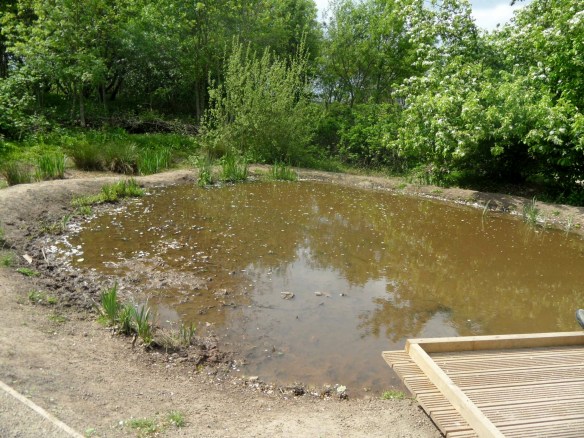

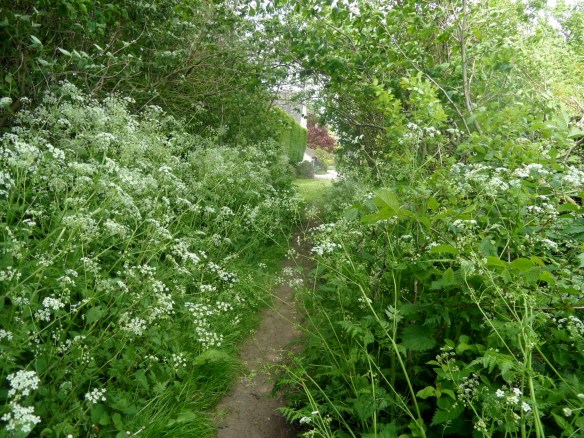
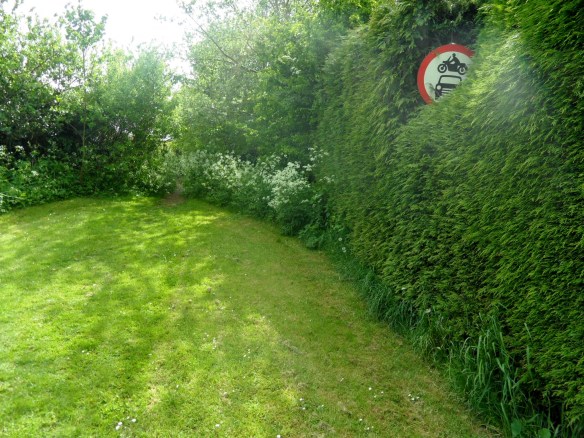
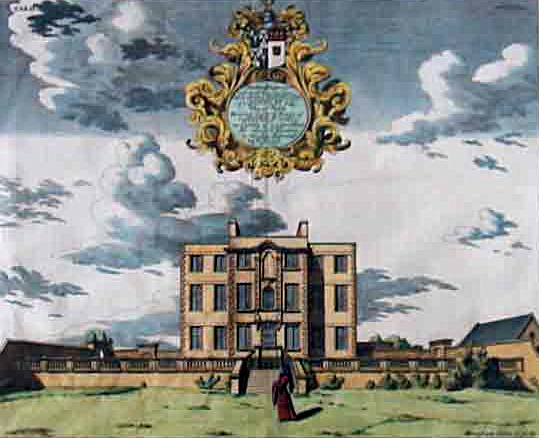






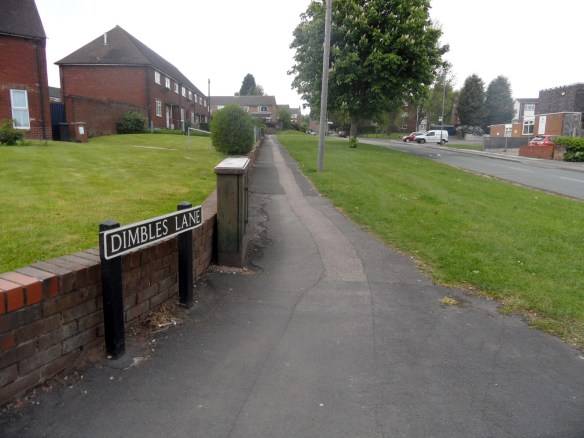

Hello Kate .. Great piece again.. I’m just wondering if the mentioned Dimbles Lane is on any maps that you can see it heading in the Elmhurst direction? .. ‘The Woods’ and surrounding fields were a big part of my childhood, although I can’t ever remember nothing but a track leading from the top of Dimbles Lane, through the woods to the pool In Elmhurst.. It’s always been felt there’s quite a bit of distance between the Dimbles & Elmhurst area’s, but reading your details above, it seems there has always been some sort of link?
LikeLike
Thanks Simon. Like ypu I imagined it separately. That’s one of the been confusing me but I have seen evidence that it was all one lane called Dimbles Lane at some point. There’s old maps showing it all as Dimbles Lane & a couple of property adverts in Mercury referring to Dimbles Lane, Elmhurst in the 1950s. I find that roads like Eastern Ave are a re barrier for me in imagining how things were. I will send you the links if you are interested? I might have got it wrong so would live to hear your thoughts! Cheers kate
LikeLike
Here we go – it’s the 1923 maps on this site that shows ‘The Dimbles’ & Dimbles Lane in Elmhurst. Also this 1832 map seems to show Dimbles Lane as going from central Lichfield to Elmhurst non-stop http://visionofbritain.org.uk/iipmooviewer/iipmooviewer_new.html?map=bc_reports_1832_v3/Staffordshire_Lichfield and this 1815 one http://www.bl.uk/onlinegallery/onlineex/ordsurvdraw/l/zoomify82523.html. I read on the LDC info page that the site contains the remains of an archaeological feature, an anglo-saxon walkway known as ‘The Dimble’.David Garrick described the Dimble as ‘a sunken road leading north from Lichfield’. So my feeling is Dimbles Lane is an ancient route that lead from Lichfield to Elmhurst, through what is now the nature reserve. However, this isn’t about me being right though, so please say if you disagree -I just want to know how the landscape was!
LikeLike
There’s this photo taken from above in 1971 which might help too…https://lichfieldlore.co.uk/wp-content/uploads/2012/10/Lichfield-8th-September-1971.jpg Also this map shows it as Circuit Lane in 1860s http://visionofbritain.org.uk/iipmooviewer/iipmooviewer_new.html?map=bc_reports_1868/Lichfield_1868
LikeLike
Great blog Kate,
It must have been heartbreaking for families to have their sons killed
fighting for King & Country ,While other people’s sons were remembered
on a place for all to see their sons are only remembered by the families
so very sad but you have told their story now the world knows the facts.
LikeLike
Thanks Pat. I agree, I found something really sad about that letter. The mother lost her son, and then wasn’t able to have his name added to the memorial as a reminder of his bravery in his own city. I hope that he was remembered on the memorial at St Chad’s alongside Alfred Cleveley and Joseph Hall.
LikeLike
Great post Kate. Do you have any information on Stitchbrook…I only remember it as a ruin, it’s always intrigued me.
LikeLike
Thanks Jay. I don’t have much at the moment, but as you’re the second person to mention it, I think it’s about time I had a look too!! Once it stops raining o course 🙂
LikeLike
Just started to have a virtual look. Seems there has been talk of a deserted medieval village at the site & seems to be links with the Dyott family. Also I’ve read that some of the crew of a Wellington Bomber were killed when their plane crashed at Stychbrook Farm shortly after taking off on a training flight on 11/12/1942 http://www.flickr.com/photos/43688219@N00/2371267362/
LikeLike
Weirdly, I think someone started a discussion on it on the Lichfield facebook group, if you have access to it!
LikeLike
Robert Plot (1686)…
“…yet by numerous reflections to and fro, from one object to another, will return a hum or clap of the hands much more quick and frequently, perhaps some ten or a dozen times or more, the voice or clap fading as it were, or dying away by degrees in a trembling manner, rateably to the remoteness and weakness of the reflections.
And such a tremulous echo there is (for I cannot fit it with a better epithet) at Elmhurst Hall on the Tarras walk in the gardens behind the house, where the various windings and angles return a hum or clap of the hands (the weather being calm), ten or a dozen times, so thick and close that it admits nothing articulate unless we may account a monosyllable so. Which was shown to me by the worshipful Michael Bidulph Esq…”
LikeLike
Wow if I’d have known on the walk I could have tried it out!
LikeLike
Maybe Lichfield City Council could be petitioned to add the names of the fallen from Elmhurst to the war memorial in Lichfield. Or, it would be nice if there was a small memorial with the names on to the fallen in Elmhurst. “Lest We Forget!
LikeLike
I think that the memorial in St Chads May have all of the Elmhurst names on. But I wonder if there is anything in the mission room as well. I know names were added after on the main city memorial as per JPG’ s comment.
LikeLike
Some of the Elmhurst primary school kids ended up at Charnwood Primary school then went to Nether Stowe Comprehensive school for secondary school.
LikeLiked by 1 person